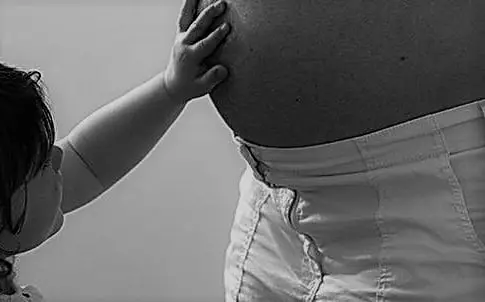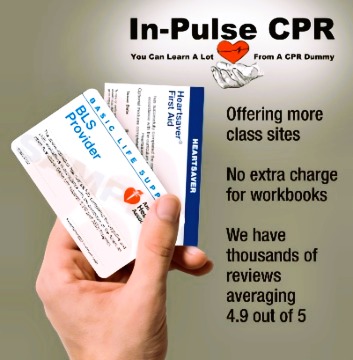Why Parents Should Learn Infant CPR
We often hear the word CPR used in casual conversation in child care centers or in hospitals. CPR is short for cardiopulmonary resuscitation. This lifesaving measure is performed when a child or adult has stopped breathing or the heart stops beating. This may happen after certain incidents, such as an injury, choking, suffocation, heart attack, or drowning.
Rescuing an Infant
This rescue effort, when performed on children who are infants, is critical when a baby is having trouble with respiration. In this case, CPR is normally directed to resolve a breathing problem rather than a heart condition. Usually, in these cases, CPR is administered if an infant is choking. CPR should begin immediately.
Following the Format
If someone else is available at the scene, he or she should be directed to call 911 and locate an AED, or automated external defibrillator. Five sets of CPR should be performed before getting additional help. One set consists of 30 compressions followed by two breaths.
If a second rescuer returns with the AED, he or she should follow the prompts on the defibrillator and apply the pads. If you find that the infant is not breathing, is unresponsive or gasping for air, CPR should always be performed.
What Infant CPR Covers
Infant CPR covers medical emergency aid for children 0 to 12 months old. This form of CPR is almost identical to the CPR given to older children.
Therefore, CPR is a combination of chest compressions and rescue breaths, known as mouth-to-mouth resuscitation. CPR is designed to restore oxygen-rich blood to the brain. When oxygen is not present, brain damage or death can occur in under eight minutes.
When Infant CPR is Typically Needed
Besides choking incidents, infant CPR is used for infants in near-drowning incidents or for victims who have succumbed to smoke inhalation or poisoning. Sudden infant death syndrome (SIDS) can also be prevented through the use of CPR.
Why You Should Enroll in a Course
While you can read about this rescue measure as a parent, you should learn the details of performing CPR by enrolling in a course. While CPR should begin immediately, you still need to determine if it should be performed. This is done by checking the person’s breathing or degree of response.
You owe it to your child to learn CPR, as it only takes eight minutes for anyone with breathing difficulties to lose consciousness or die. What you do to protect your child is just as important as what you don’t do. Therefore, taking a CPR course is a wise course of action.
Why Not Host a CPR Party?
In fact, if you know other parents in your neighborhood with infants, why not ask them to attend a CPR party. Schedule an instructor to show you how to give infant CPR. You can even ask your babysitter to participate. This is a great way to emphasize the importance of life support and infant care. Keep in mind, many instructors (for safety reasons) won’t come to your house, so plan on finding a community space to use like your church or a meeting room at your local library. Often you can use this space without cost.
Reviewing the Steps
When giving CPR to an infant, the following should be practiced.
1. Clear the area to ensure the infant’s safety.
2. Shout and tap to make sure the infant is not responding.
3. Yell for help. If another person is present, have him or her call 911 and locate an AED.
4. Check the infant’s breathing.
5. Five sets of 30 compressions followed by two breaths should be given to unresponsive infants who have stopped breathing, and are gasping for air.
6. Call 911 if it has not already been done.
7. Resume manual CPR.
Applying Chest Compressions
When compressions are given, you need to push in the same manner as you would do when giving CPR to a child or adult. Position the infant on a hard and firm surface. This makes the process simpler. When giving compressions, do the following:
1. After positioning the infant on a firm, level, and hard surface, move any clothes away from the chest.
2. Place two fingers of one hand on the breastbone, just under the line of the nipple.
3. Push down about 1.5 inches or 4 centimeters, at about 100 beats per minute.
4. Permit the chest to recoil before resuming the compressions.
Because performing compressions can be tiring, it is helpful to switch with another person every couple minutes to ensure continued care.
Opening Up the Airway and Giving Breaths
Because most CPR cases involve respiratory problems, it helps to provide breaths. Giving breaths and administering compressions to the chest are both important. A good breath will raise the chest.
Opening Up the Airway
To open up an infant’s airways, you need to do the following:
1. Place one hand on the victim’s forehead,
2. Place a finger on the chin’s bony section.
3. Gently tilt back the head and lift the chin.
Important Note: Never tilt the head too far back as doing so will block the airway. Also, press the bony part of the infant’s chin instead of the soft part, as doing so can also block airflow.
Giving Breaths
Once the airway is opened, you can give breaths.
1. Take a deep breath and seal your mouth over the baby’s nose and mouth.
2. Blow for a quick second, watching the chest rise. Only a very small volume of air will inflate a baby’s lungs. Don’t blow too hard, as this can damage the lungs. Only a small exhalation of air is required of an infant.
3. Repeat, giving a second breath.
If the chest does not rise after giving the first breath, you will need to re-open the airway, tilting the head while lifting the chin. Try to get a breath while looking for the chest to rise. Do not postpone compressions more than ten seconds when you are giving breaths.
Using a Mask
While giving breaths is usually safe, a mask, if available, should be used. A mask is designed to fit over the victims’ nose and mouth. Just make sure the mask fits properly. Otherwise, a reliable seal cannot be obtained and any effort at giving breaths will prove to be ineffective.
How to Use the Mask
When using a mask to give breaths, follow the steps below:
1. Place the mask over the baby’s nose and mouth,
2. Open the airway, gently tilting back the head and lifting the chin.
3. Make sure the seal is secure between the face and mask.
4. Give a breath quickly and watch for the chest rise.
When Choking Occurs
Choking happens when a foreign object or piece of food lodges in the throat, blocking the airway. Quickly perform back slapping and chest thrusts. Choking may be mild or severe.
A Mild Obstruction
If the obstruction is mild, the infant may be breathing but could be wheezing. He or she may also cough or produce a similar noise. In this instance, stay with the baby and attempt to calm him or her.
A Severe Obstruction
If the obstruction is severe, the infant will appear weak and will not cough. He or she normally will not be able to talk and may, instead, produce a high-pitched sound. The baby may also appear cyanotic, or show a blue color around the fingertips or around the lips. In this instance, time is of the essence. Act fast and follow the CPR steps.
Relieving Choking
To relive choking, do the following:
1. Hold the baby on your lap, face down, with the head lower than the victim’s chest. The baby should be resting against your forearm, which is placed upon your thigh.
2. Support the baby’s neck and head with your hand, making sure to not place throat pressure.
3. Provide five back slaps between the baby’s shoulder blades, using the heel of your hand.
4. Use both arms and hands and turn the infant toward you so he or she rests on your other arm, which is now placed on your thigh.
5. Use two fingers in the same way you do for administer CPR and provide quick-timed chest thrusts.
6. If the obstruction is still there, turn the baby face down on your forearm, repeating the steps.
7. Continue with this measure until the baby starts to breathe or lacks a response.
Remove the Object If you Can Do So
If you see a piece of food or foreign object in the child’s mouth, remove it if it can be done. Don’t sweep the victim’s mouth with your finger, as you may push the object toward the air passage. After removing the object, wait and check for breathing.
If an infant does not respond, position him or her on a flat and firm surface, yelling for assistance. At this point, check for breaths before beginning CPR. After 30 compressions, open up the air passage, seeking the foreign object. If you see the object, remove it and try to respirate with two breaths.
Infants do not respond when they stop squirming in your arms and take on a limp appearance. Chest compressions and giving breaths must the practiced if the infant stops moving in the interim.
In Conclusion –
As you can see, the above steps can become involved and therefore are important to know. Don’t overlook the importance of learning a life-saving procedure. Doing so will make it possible for you to mange any emergency with more confidence. Learning CPR takes a minimal amount of time, especially when you consider that it can save a life.
Sources:
https://kidshealth.org/en/parents/cpr.html
https://myhealth.alberta.ca/Health/aftercareinformation/pages/conditions.aspx?hwid=bo1352




